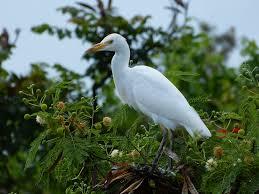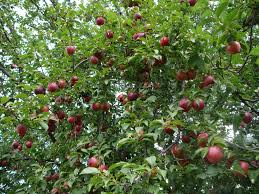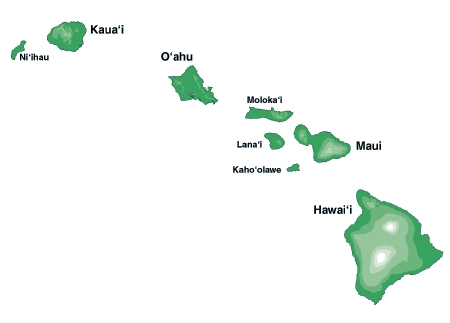Invasive Species
- Home
- Invasive Species
Invasive plants and animals
Invasive plants and animals are a very significant source of environmental deterioration, especially in ecosystems like Hawai’i. Invasive species are organisms introduced to Hawai’i that harm, threaten, and out-compete native species for resources and habitat. Plants can be invasive through aggressive growth that shades out native plants and dominating the seed back through higher dispersal than native plants. Some invasive plants actually inject toxins into the ground that kill the surrounding plants. Invasive animals can be invasive by direct predation or destroying habitat.
For instance, one invasive plant, miconia, becomes monotypic (the only plant present) in an area because it grows above and overshadows its fellow foliage. Due to the shallow roots of miconia, there is a greater chance that the entire hillside will erode away in heavy rain.
One of the most devastating invasive animals introduced to Hawai’i is the pua’a or wild pig. They uproot native plants, leaving a wallow where mosquitos can breed. Mosquitoes carry a disease called avian malaria that often kills native birds. In addition to the spread of disease, forested areas that have been uprooted by the pigs will flow into the streams and ocean to act like a thick cloud smothering the reef and preventing sunlight penetration.



Pictured left to right: mongoose, axis deer, cattle egret


Pictured left to right: mangrove, miconia, strawberry guava
A list of some of the invasive species found on each island can be seen below. Click on each island for a list of common invasive species.
Invasive Species Throughout the State
This is a non-comprehensive list of some of the invasive species throughout the state. Click on each island to view a list of some of the invasive species found there.

'Oahu
Plants
- Miconia
- Fountain Grass
- Strawberry Guava
- Mangrove
- Gorilla Ogo (algae)
- Gorse
- Australian Tree Fern
- Barbados Gooseberry
- Cattail
- False Kava
- Fire Tree
- Smoke Buch
- Rubbervine
- Pampas Grass
- New Zealand Flax
- Long Thorn Kiawe
- Kappaphycus Algae
- Ivy Gourd
- Hookweed
- Hiptage
- Himalayan Blackberry
- Giant Reed
Animals
- Rosy Wolfsnail
- Mongoose
- Feral Pig
- Feral Cats
- Cattle Egrets
- Barn Owl
- Coqui Frog
- Toad
- Jacksonʻs Chameleon
- Red-Whiskered Bulbul
- Red-Vented Bulbul
- Little Fire Ant
- Rat
Maui
Plants
- Miconia
- Strawberry Guava
- Mangrove
- Fireweed
- Gorse
- Australian Tree Fern
- Plume Poppy
- Cattail
- False Kava
- Fire Tree
- Smoke Bush
- Rubbervine
- Rapid Ohia Death (fungi)
- Pampas Grass
- New Zealand Flax
- Ivy Gourd
- Hookweed
- Himalayan Blackberry
- Glory Bush
- Giant Reed
Animals
- Rosy Wolfsnail
- Mongoose
- Feral Pig
- Axis Deer
- Feral Cats
- Cattle Egrets
- Barn Owl
- Coqui Frog
- Toad
- Jacksonʻs Chameleon
- Veiled Chameleon
- Little Fire Ant
- Rat
Lana'i
Plants
- Fountain Grass
- Strawberry Guava
- Fireweed
- Long Thorn Kiawe
- Ivy Gourd
Animals
- Rosy Wolfsnail
- Axis Deer
- Sheep
- Feral Cats
- Cattle Egrets
- Barn Owl
- Toad
- Rats
Moloka'i
Plants
- Strawberry Guava
- Mangrove
- Gorilla Ogo (algae)
- Gorse
- Barbados Gooseberry
- Rubbervine
- Long Thorn Kiawe
- Hookweed
- Giant Reed
Animals
- Rosy Wolfsnail
- Mongoose
- Feral Pig
- Axis Deer
- Feral Cats
- Cattle Egrets
- Barn Owl
- Toad
- Rats
Hawai'i
Plants
- Micona
- Fountain Grass
- Strawberry Guava
- Mangrove
- Fireweed
- Gorilla Ogo (algae)
- Gorse
- Australian Tree Fern
- Plume Poppy
- Fire Tree
- Smoke Bush
- Rapid Ohia Death (fungi)
- New Zealand Flax
- Ivy Gourd
- Himalayan Blackberry
- Glory Bush
- Giant Reed
Animals
- Rosy Wolfsnail
- Mongoose
- Feral Pig
- Axis Deer
- Sheep
- Goats
- Feral Cats
- Cattle Egrets
- Barn Own
- Coqui Frog
- Toad
- Jacksonʻs Chameleon
- Red-Vented Bulbul
- Little Fire Ant
- Rat
Kaua'i
Plants
- Miconia
- Fountain Grass
- Strawberry Guava
- Mangrove
- Fireweed
- Gorse
- Australian Tree Fern
- Barbados Gooseberry
- Cattail
- False Kava
- Fire Tree
- Smoke Bush
- Rubbervine
- New Zealand Flax
- Long Thorn Kiawe
- Ivy Gourd
- Hookweed
- Hiptage
- Glory Bush
- Giant Reed
Animals
- Rosy Wolfsnail
- Feral Pigs
- Feral Cats
- Cattle Egrets
- Barn Owl
- Coqui Frog
- Toad
- Veiled Chameleon
- Little Fire Ant
- Rat
- Home
- Invasive Species